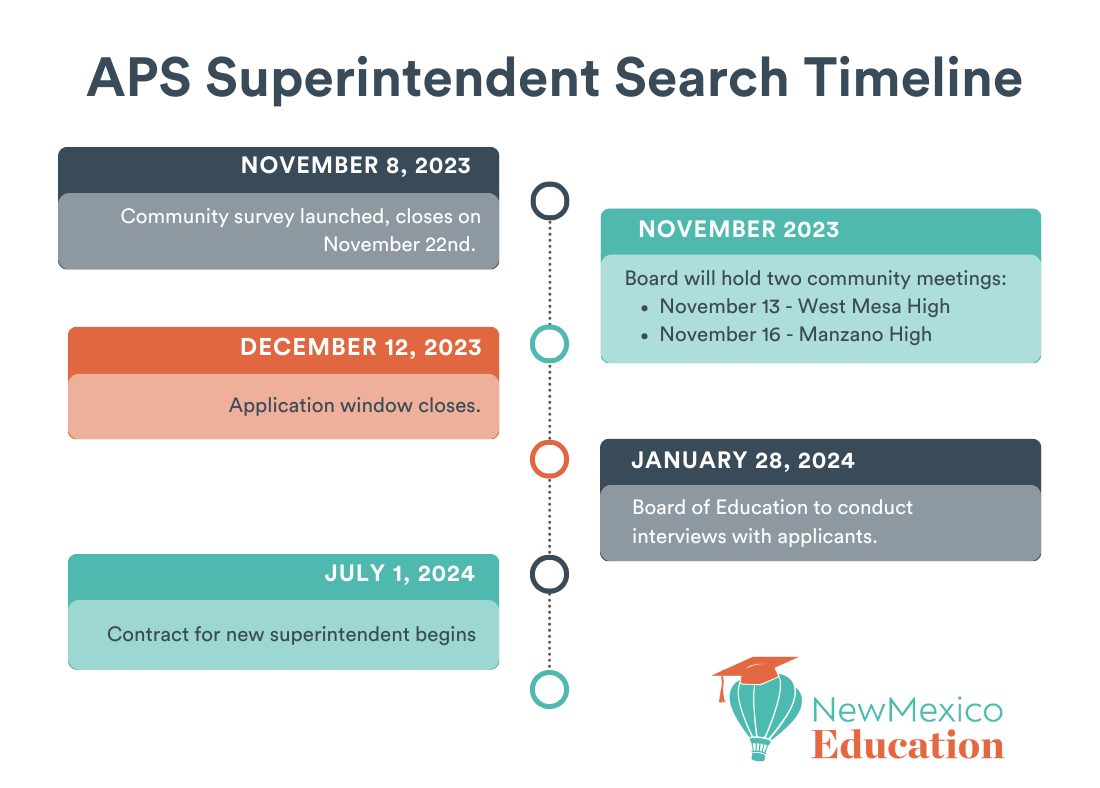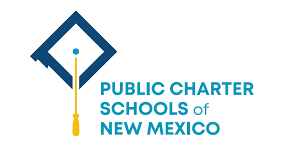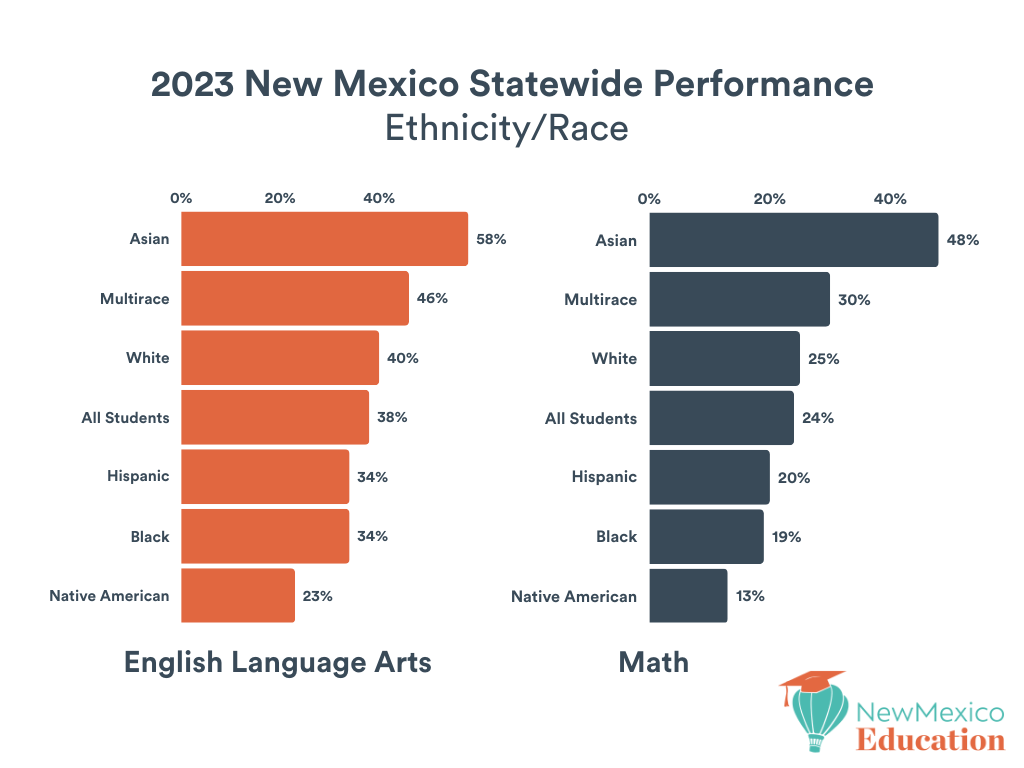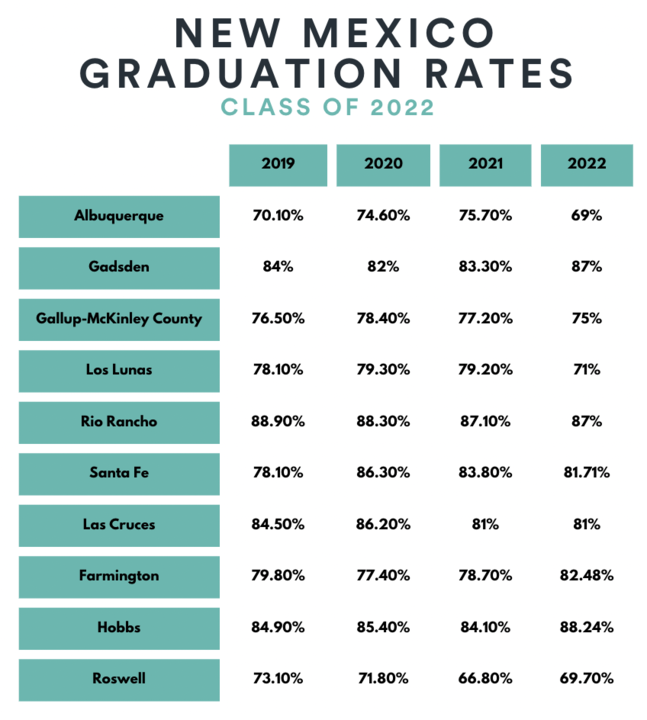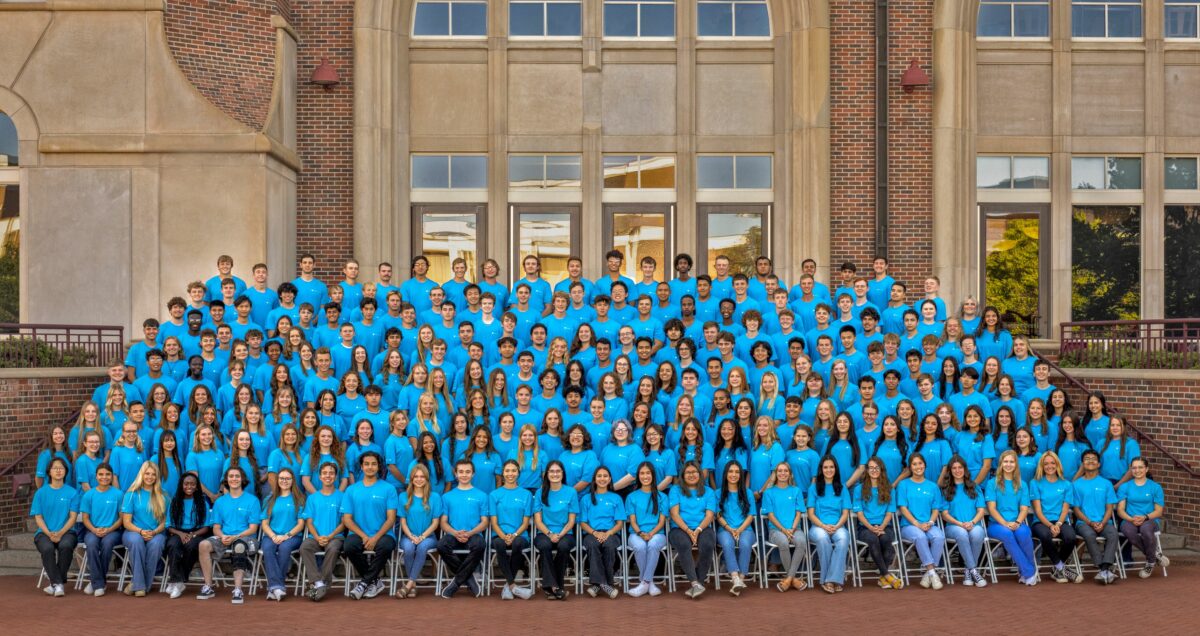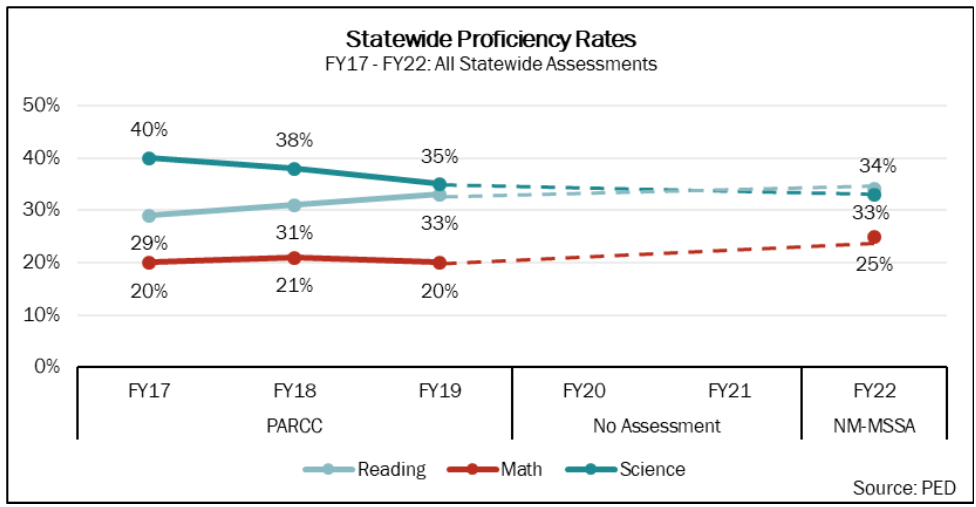On November 1, the Public Education Department was scheduled to release the state summative assessment results for 2023, months behind schedule. As of press time, those results had not been released. New Mexico Education obtained several slides from a presentation given to statewide school district leaders about the scores the morning of November 1. The information in this story comes from those slides. The story told by these results are bittersweet, with positive news in the state’s literacy rates – with a four percent increase – but a decline – one percent – in mathematics.
The 2023 results released today by PED do not give a complete picture of New Mexico’s student performance. The results do not include data from the SAT college readiness exam, required for all 11th grade students. Also absent from today’s release were early literacy rates, as measured by I-Station, which is required for all K-2 students, and results from the state science assessment. New Mexico Education will continue looking for these scores as we continue asking the question “Where are the Scores?”
At this time, validating the increase reported by the NMPED is challenging because it remains unclear whether the students included in last year’s proficiency calculations are the same as this year. Last year’s ELA proficiency was based on results from the NM-MSSA and the SAT, which means it included grades 3-8 and 11. It is unclear at this time whether SAT data was included in this year’s proficiency rate calculations. When New Mexico Education asked about this information, we were told to wait until the data gets posted to NMVistas. Many educators have complained about the data discrepancies which already exist within Vistas.
Robin Stevens, a sixth grade English teacher at Hobbs Elementary, explained the importance of this data and its timeliness. “High quality, complete, and timely data is vital in monitoring students’ progress. As an educator, I strive to meet the needs of each learner and need to have objective indicators of my students’ performance over time. In order to fully understand my students’ learning levels, monitor their progress, address their knowledge gaps or accelerate learning, and evaluate their educational needs, I need assessment data that is reported in a timely, reliable, and easy to use manner.”
English Language Arts Improves Across State
The NMPED is reporting a dramatic increase in English Language Arts. Despite the data only being shared today by the NMPED. Governor Michelle Lujan Grisham’s office has been touting a four percent increase in ELA proficiency since early September.
In 2022, only 34 percent of New Mexico students were proficient in ELA. The most recent data shows that 38 percent of students are proficient, giving New Mexico its four percent growth.
Roy Municipal Schools is the highest performing district in the state in ELA proficiency. According to data released from PED, 78.9 percent of students at RMS are reading at grade level.Data from 2021-2022 shows RMS was at 61 percent proficiency – a 17 percentage point increase.
Pojoaque Valley School District had the largest gain in their English Language Arts proficiency of all the districts in the state. Slides presented to district leaders from the PED boasted a 26.7 percentage point growth in student proficiency for PVSD.
The Social Factor
The Yazzie-Martinez Consolidated Lawsuit has continued to apply pressure for New Mexico’s education system to better serve its students. After a court ruling was issued that New Mexico schools are not doing enough to address the proficiency gaps among various disenfranchised student groups, the state has been under pressure to address these challenges.
In 2022, only 30 percent of Hispanic students were proficient in ELA. Data from 2023 shows Hispanics at 34 percent proficiency. A four percent increase.
Among White students, 53 percent were proficient in ELA during the school year 2022. In 2023, that proficiency decreased to 40 percent, a 13 percent decrease.
Black students saw a one percent increase in ELA proficiency, reaching 33 percent proficiency in 2022 and moving up to 34 percent in 2023.
With a five percent increase in ELA proficiency, Asian students were at 53 percent in 2022 and have moved up to 58 percent.
In 2022, 20 percent of Native American students were reading proficiently, in 2023 that number increased to 23 percent. A three percent increase.
The Gender Impact
New Mexico girls outperformed boys in ELA by five percent. Results from the 2022-23 school year show that females are 41 percent proficient in reading, and males are at 36 percent.
Mathematics Proficiency Decreases One Percent
While New Mexico’s ELA situation looks bright, student proficiency in mathematics has slipped. In 2022, 25 percent of students were proficient in math, today’s data shows that only 24 percent of students are proficient,a one percent decrease.
The Social Factor
When comparing data of Hispanic students from 2022 and 2023, there is no difference in performance. For both school years, only 20 percent of Hispanic students were proficient in mathematics.
Marking a massive decrease in mathematics proficiency, 42 percent of White students were proficient in 2022. Data from 2023 shows that only 25 percent of these students were proficient in math. That is a 17 percent decrease.
Another decrease in proficiency occurred with Black students. In 2022, 20 percent of Black students were proficient in mathematics. In 2023, that number decreased to 19 percent, a one percent decrease.
Asian students saw an increase in their proficiency in mathematics. In 2022, 46 percent of Asian students were proficient. In 2023, 48 percent of students were proficient in math, a two percent increase.
Only 14 percent of Native American students were proficient in mathematics in 2022. In 2023, that number dropped to 13 percent, a one percent decrease in mathematics proficiency.
The Gender Impact
Opposite of the ELA statistics, males are outperforming their female counterparts in mathematics. Data from 2023 shows that 27 percent of male students are proficient in mathematics, compared to 22 percent of females.
Data Discrepancies
New Mexico Education editors were surprised by the data regarding the fall of proficiencies among various student groups. If the data is accurate, White students in particular are seeing a massive decline in both ELA and Math proficiency rates. In the section above, the data used was from the proficiency tables posted to the PED website. However, when you look at the same data set (statewide proficiency for White students in ELA and math), NMVistas reports different proficiencies; 36 percent and 26 percent respectively. These proficiency numbers make more sense, and would indicate that achievement for White students actually increased from last year. Without accurate data from the state, there is no way to know.
New Mexico Education continues to ask “Where are the Scores?” so we can get an accurate read on what the true situation is with statewide academic performance. The data New Mexico Education is working with was embargoed by the PED until November 1, and we are sharing as much as we can. Without fully fleshed out data from the state, this information is the best we have to work with.
PED needs to release the data and be fully transparent in order for New Mexicans across the state to have a clear understanding of their student’s performance.
The slides released by the NMPED are available here.
The 2022-2023 assessment results for New Mexico


